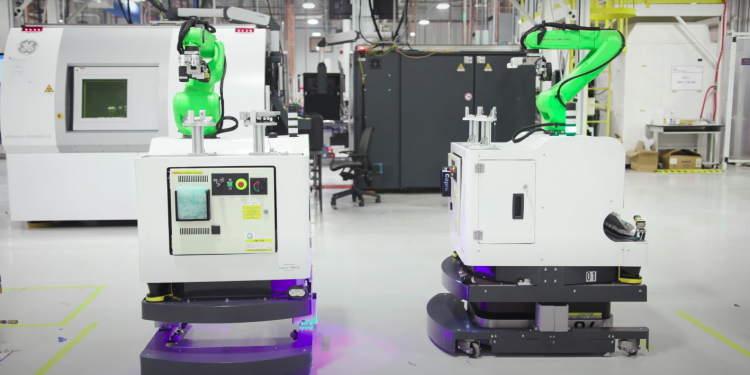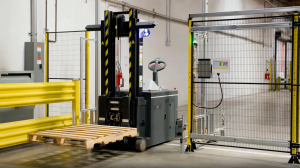Future-Proofing Facilities with Scalable Mobile Automation

In today’s fast-changing industrial landscape, mobile automation has shifted from being an experimental concept to a critical enabler of operational resilience. Yet while many organizations are eager to deploy robots and automated systems, too many projects stall at the proof-of-concept stage. Future-proofing facilities requires a broader strategy: one that looks beyond the technology itself and considers people, processes, and infrastructure in equal measure.
The Three Pillars of Future-Proofing
Future-proofing a facility involves more than installing robots. It is about designing an environment—both physical and cultural—that is ready for change. Think of it as a three-legged stool:
- Physical Layout – Facilities must be designed with flexibility in mind. A layout that accounts for mobile automation, even before robots arrive, makes scaling far easier later. Consider aisle widths, floor conditions, and integration points with equipment and material flow systems.
- People and Processes – Technology adoption succeeds or fails based on workforce engagement. Employees must see automation not as a threat, but as a tool that enhances their work. This requires thoughtful change management, training, and involvement from the earliest stages.
- IT/OT Infrastructure – Mobile automation thrives when integrated with existing digital systems. Strong data networks, reliable interfaces with manufacturing execution systems, and forward-looking IT/OT architecture make it possible to plug in new technologies quickly and efficiently.
Neglecting any leg of this stool destabilizes the entire automation strategy.
The Trap of Endless Pilots
One of the most common pitfalls in mobile automation is “death by proof of concept.” Many organizations start with a small pilot—one workflow, a few robots—only to find themselves unable to scale. The reasons vary: sometimes the technology itself doesn’t expand well, other times the organization fails to plan beyond the pilot. Either way, the result is wasted investment with no return.
Scalability must be a consideration from day one. It’s not enough to ask whether a solution works today; the critical question is whether it will work tomorrow with forty robots, across multiple workflows, or in different facilities. Without this foresight, organizations risk staying in perpetual pilot purgatory, where ROI is never realized.
Managing Change and Workforce Buy-In
Even the best technology will stall without workforce support. Resistance often arises when employees feel excluded from the process or fear that automation will eliminate jobs. Successful organizations address this head-on by involving workers early and often.
Involvement builds ownership. When employees participate in evaluating solutions, providing input on workflows, or even testing equipment, they develop a sense of stake in the outcome. This transforms skepticism into advocacy. Instead of resisting automation, employees champion it, accelerating adoption from the ground up.
Equally important is clear communication. Workers need to understand how automation will make their jobs safer, more efficient, or less physically taxing. When the value is visible at a personal level, adoption becomes far smoother.
Designing for Scalability
Future-ready facilities plan for mobile automation even when it isn’t immediately deployed. A key step is ensuring that new equipment is “automation ready.” Asking machine builders how their equipment interfaces with autonomous mobile robots (AMRs) or automated guided vehicles (AGVs) can prevent costly retrofits later.
Beyond equipment, scalability depends on workflows. Rather than obsessing over robot counts, organizations should focus on processes. Prove out one workflow, then expand to the next, building efficiency layer by layer. This phased approach allows companies to spread investment over time while maintaining momentum toward ROI.

The Role of Interoperability
No single vendor can deliver every automation solution. Large organizations, in particular, require multiple systems—AMRs, ASRS units, robotic arms, conveyor networks—all working together. Interoperability is therefore a cornerstone of scalability.
The future will not belong to a “single fleet manager to rule them all.” Instead, multiple systems will need to communicate effectively, each retaining its strengths while sharing critical data. This requires middleware, standards, and openness to integration.
Organizations that plan for multi-vendor environments will be better positioned to expand without being locked into a single provider.
Software: The True Differentiator
While hardware is important, differentiation in mobile automation increasingly comes from software. Robots are only as effective as the fleet management systems, analytics tools, and user interfaces that control them. The ability to quickly add workflows, integrate with enterprise systems, and deliver actionable insights is what turns a collection of machines into a scalable automation ecosystem.
Good software also accelerates ROI. When organizations can easily drop in additional robots, reconfigure workflows, and track performance, scaling becomes faster and less costly. In contrast, solutions that require extensive coding or customization create bottlenecks that delay payback.
KPIs and ROI Considerations
Measuring success requires thoughtful metrics. Traditional OEE (Overall Equipment Effectiveness) can be expanded to include mobile automation, tracking how robots contribute to throughput, uptime, and utilization across processes. By tying automation directly to established performance measures, organizations can ensure solutions remain viable long-term.
Scalability also affects ROI timelines. Pilots rarely deliver full ROI on their own; value emerges as systems expand. The faster new robots and workflows can be added, the sooner organizations achieve their return. Software, interoperability, and workforce adoption all play critical roles in shortening this timeline.
Emerging Trends in Mobile Automation
Looking ahead five to ten years, several trends will shape how mobile automation scales:
- Interoperability as Standard Practice – Multiple AMR and AGV systems will work together seamlessly, driven by middleware and shared standards.
- Simulation and AI – Advances in simulation will allow organizations to model workflows before robots hit the floor, improving planning and ROI.
- Faster Integration – Plug-and-play connectivity with PLCs, MES, and ERP systems will replace costly custom coding.
- Commoditization of Hardware – Differentiation will increasingly come from data handling and software, not just robot design.
Organizations that stay ahead of these trends will be best positioned to maximize automation’s value.
Selecting the Right Partners
Choosing automation partners is as much about long-term stability as short-term capability. With so many new entrants to the market, companies must do their due diligence to ensure vendors will be around to support systems years from now. Longevity, financial stability, and a proven track record should be key selection criteria.
Equally important is openness. Vendors who are willing to collaborate, integrate with others, and support evolving standards provide a stronger foundation for scalability than those who insist on closed ecosystems.
Practical Questions for Future-Proofing
When evaluating mobile automation, organizations should ask:
- Does this solution scale easily across workflows and facilities?
- How well does it integrate with existing IT/OT systems?
- Are employees engaged in the selection and adoption process?
- Is the vendor likely to support this system long-term?
- What role will interoperability and middleware play in avoiding vendor lock-in?
The answers to these questions often determine whether a project delivers lasting ROI or stalls after the pilot.
Conclusion
Future-proofing a facility for mobile automation is not about chasing the newest robot or the flashiest demo. It is about building a foundation—physical, cultural, and digital—that enables long-term scalability. Success comes when facilities are designed for flexibility, employees embrace change, and systems integrate seamlessly with one another.
Those who plan beyond the pilot, prioritize interoperability, and focus on software as much as hardware will find that mobile automation not only delivers ROI but also creates a resilient, adaptable foundation for the future of manufacturing and logistics.
Information provided by MAG Executive Member, Rockwell Automation
To find out more about MHI’s MAG Industry Group: https://www.mhi.org/mag
For further articles/podcasts from MAG:
AGV & AMR Navigation Systems: Floor-Based vs Lidar
Maximizing ROI with Mobile Automation: What the Data Shows
Flexibility vs. Predictability in Mobile Automation: What Facilities Should Really Be Considering
Enhancing Safety and Ergonomics Through Automation
Good Fences Make Good Neighbors – Why to Consider Fencing with your Warehouse AMRs
Lessons Learned from Implementing Mobile Automation
The Evolution of AGVs and AMRs



